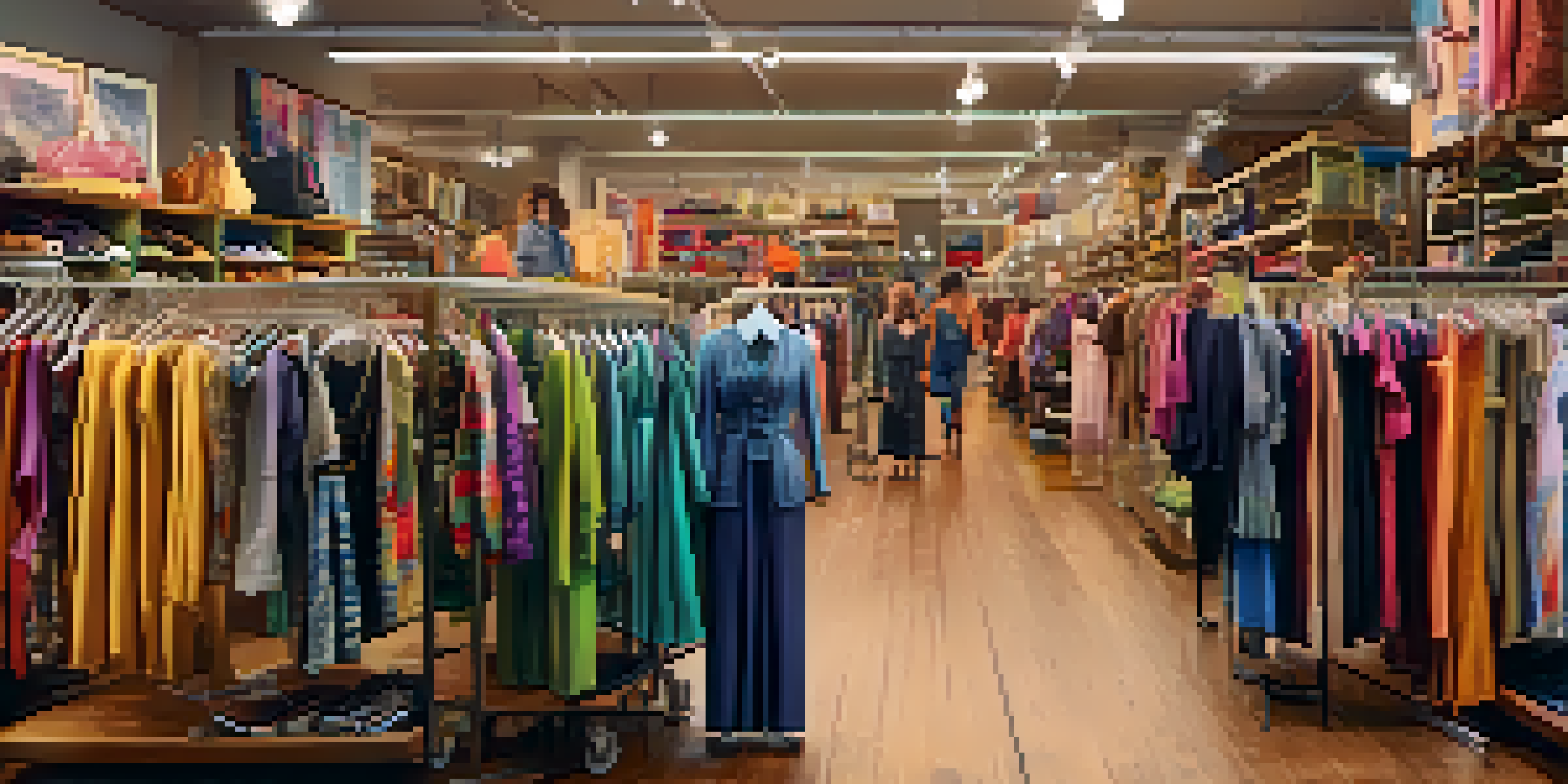The Impact of Fast Fashion on Labor Rights and Environment

Understanding Fast Fashion: A Brief Overview
Fast fashion refers to the rapid production of inexpensive clothing to meet the latest trends. Retailers create new designs quickly, allowing consumers to buy stylish clothes at low prices. This model has made fashion accessible but comes with significant consequences for both workers and the environment.
Labor Rights Violations in the Fast Fashion Industry
Many fast fashion brands rely on low-cost labor in developing countries, where workers often face poor conditions. Reports of long hours, minimal pay, and unsafe working environments are alarmingly common. This exploitation raises serious questions about the ethics of our clothing choices and the human cost behind our wardrobes.
Fast Fashion's Human Cost
The fast fashion industry often exploits workers in developing countries, subjecting them to poor labor conditions and minimal pay.
Environmental Impact: The Cost of Cheap Clothes
The production of fast fashion is not just harmful to laborers; it also wreaks havoc on the environment. The industry is one of the largest polluters globally, with massive water consumption and toxic waste from dyeing processes. Each garment contributes to a cycle of pollution that affects air and water quality, impacting communities worldwide.
Consumer Culture: The Drive Behind Fast Fashion
The allure of fast fashion lies in its ability to offer trendy styles at a fraction of the cost, leading to a culture of disposability. Consumers are encouraged to buy frequently, often only wearing items a few times before discarding them. This mindset not only fuels the demand for cheap labor but also exacerbates environmental degradation.
Environmental Damage from Trends
The production of cheap clothing significantly contributes to pollution, impacting air and water quality globally.
The Role of Brands: Accountability and Responsibility
Brands have a responsibility to ensure ethical practices throughout their supply chains. Many are beginning to adopt sustainability initiatives and transparent reporting to improve labor conditions. However, meaningful change requires ongoing commitment, rather than just marketing strategies to appear socially conscious.
Sustainable Alternatives: A Path Forward
As consumers become more aware of the implications of fast fashion, sustainable alternatives are gaining traction. Thrift shopping, upcycling, and supporting ethical brands are becoming popular choices. These practices not only promote environmental sustainability but also support fair labor practices.
Consumer Choices Matter
By opting for sustainable alternatives and ethical brands, consumers can drive positive change in the fashion industry.
The Importance of Consumer Education and Awareness
Educating consumers about the impacts of their choices is crucial in combating fast fashion. Understanding where clothing comes from and how it affects people and the planet can lead to more informed decisions. Awareness can drive demand for change, pushing brands to adopt ethical practices and sustainable production methods.
Taking Action: How You Can Make a Difference
Every individual has the power to influence the fashion industry through their purchasing decisions. By choosing to buy from ethical brands or investing in high-quality, timeless pieces, consumers can reduce the demand for fast fashion. Small changes can lead to significant impacts, fostering a healthier planet and better labor conditions.